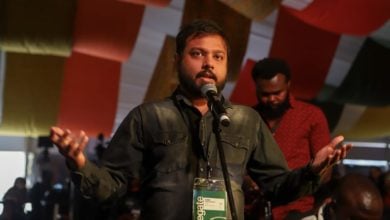Originally posted in Spanish here.
A CubaNews translation. Edited by Walter Lippmann.
In less than twenty years, three Popes have visited Cuba. This is something really surprising when you consider that this archipelago is a country geographically and demographically small, and has a relatively small number of Catholics compared to other nations of Latin America.
After four centuries of colonialism – during which the official religion, with total exclusivity, was Catholicism – an “independent” republic emerged in Cuba under the protection and control of the United States. During that republican period, Cuban society, in fact, maintained Catholicism as its main religion for the first half of the 20th Century.
Although the 1902 and 1940 constitutions stipulated the separation between church and state, their texts identified Christian morality as the ethical rule for society. This was to the detriment of any other non-Christian morality and thus ignored the cultural, moral and religious diversity required in such a plural community in terms of ethnicities, religions and traditions.
The process of formation of the Cuban nationality, the struggle for independence from Spain, and the successive stages in building an independent national project as is the current socialist society, have been characterized by a secular orientation… anticlerical to some extent. This does not mean that religion was absent from the motivations of the patriots, but the objectives have always been formulated on secular foundations.
The first time the separation of church and state was proclaimed as a constitutional principle in Cuba was during the Republic in Arms [during the 19th Century war for independence] when Cubans were fighting the colonial regimes of Spain … and Catholicism.
Relations between the Catholic Church and the Revolutionary Government – which took power in 1959 after a bloody struggle against the dictatorship of Fulgencio Batista – have gone through big challenges and tense moments.
The social transformations generated by the revolution and the development of its independent and socialist project had great impact on the process of demystification of nature. Because of its character, which renewed traditions, customs and culture in general, the revolution had a secularizing effect on society.
The legislative actions and practices of the revolution, such as the law for nationalization of education, limited the social space of the Catholic religion in Cuba, and extended it to others, such as the Spiritualists, those associated with African religions, and the Pentecostals. All these managed access to public spaces to which they had very little access previously, because of the Christian and Catholic religious monopoly.
Just remember that before 1959, the Cuban Criminal Legislation included as an aggravating factor the practice of brujería (witchcraft), the term with which the predominant Christian culture identified those religions originated in Africa, that were widespread in Cuba, especially among the poorest sectors.
In 1991, the Fourth Congress of the Communist Party of Cuba corrected sectarian errors committed in the heat of the initial clashes. It modified its statutes and declared itself as a secular non-atheist organization. It also eliminated admission barriers in the political organization for people with religious beliefs.
As a result of this, in the midst of a situation of apparent contraction of the social space of religion, the Cuban revolution created the basic legal and social conditions for a genuine religious pluralism, without confessional or institutional distinction; as well as for something that had never existed before in the country and which few nations can boast of having: a genuine religious freedom.
Admittedly, after some initial negative episodes promoted by the strong influence of Pope Pius XII and the Fascist ideas of some Spanish priests inserted in the Cuban Catholic hierarchy, the Vatican has promoted a very constructive policy in its relations with Cuba.
But the current positive practice did not start as a result of the visit of Pope John Paul II in 1998 – as some have written several times – but after the Second Vatican Council (1962-1965). On this, it is fair to acknowledge as essential, the role of the then newly appointed Apostolic Nuncio in Havana, Archbishop Cesare Zacchi, today considered the “Architect of peace between church and state in Cuba.”
The impressive popular and official welcome offered to Pope Francis in Havana seems to confirm forecasts that Latin America and the humble peoples of the world can count on the moral and ethical support of this charismatic guide of Catholicism who is willing to clean and thoroughly renew the image of his Church, bringing it closer to the Poor.
Now that US elites want to turn back history in the Latin American countries which are in the process of liberation from the domination by the North, this support could be really transcendental.
September 19, 2015.
Manuel Yepe Menéndez is a Cuban attorney, economist and political analyst. He has served as Cuban ambassador, director of Prensa Latina, and was Secretary of the Cuban Movement for Peace and Sovereignty of the Peoples.




